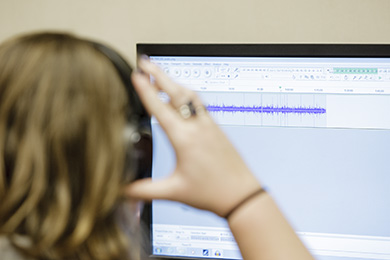Fostering Student Connections
Keeping Students Connected

Build Community—With the new normal of social distancing, facial coverings, and online instruction, we may have to deliberately strive to connect students with one another. What once took place naturally over the course of a semester may now have to be purposeful in implementation. A low-stakes assignment at the start of the semester that requires students to introduce themselves via Canvas is likely a worthwhile strategy. Asking students to create a brief video, a PowerPoint slide, or “one-pager” introduction to post in the Canvas discussion board will help students get to know each other.
Create Small Groups—In Canvas, the instructor can create small groups of students either manually (group members are purposely selected) or automatically (group members are randomly assigned). Many of the small group techniques that have previously been part of our face-to-face instruction will likely need to be tweaked and completed online, but they could still be worthwhile. For example, perhaps small groups are tasked with completing an item prior to the face-to-face session in order to prep for an extension of the content, or maybe each member of the group creates a concept map that is shared and discussed with groupmates at the conclusion of a unit of study or as exam review.
Use Student Teams—If your class is socially distanced in order to decrease density, student teams might provide a nice mechanism of support. Imagine that in your MWF class, 1/3 of the students attend the face-to-face class on Monday, 1/3 attend Wednesday, and 1/3 attend Friday. Student teams made up of one Monday person, one Wednesday person, and one Friday person would offer a connection across face-to-face and virtual students. During class time, you could ask your face-to-face students if their virtual teammates have any questions that need to be addressed. Student teams could also virtually connect through collaborative reading and note-taking. Since students can also create groups in Canvas, this would provide a space for them to connect with one another on a regular basis.
If you are planning to use virtual office hours, you could ask different teams to attend at particular times via Microsoft Teams, Zoom, or Canvas Conferences and this would allow for interaction that doesn’t require use of a mask.
Online Discussion Boards—Discussion boards in Canvas provide a mechanism for engaging students in virtual conversations. For those teaching classes that typically involve significant amounts of student discussion, discussion boards are one way to continue such practice in hybrid and online courses. However, it is important to consider effective discussion board practices so this does not feel like busywork for students. Having an awareness of facilitating robust discussions, fostering student participation on discussion boards, and common discussion board challenges are important considerations before assigning this type of work.
